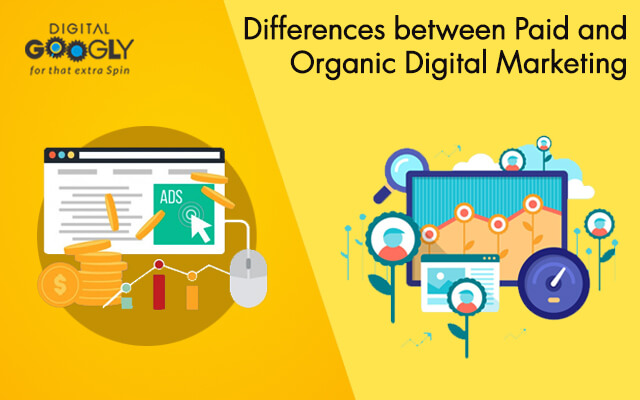With consumers active on an almost infinite number of platforms, marketers must determine where, when, and how to successfully contact them with product and service messaging. They can choose to reach audiences organically or use their funds to drive bought traffic once they’ve figured out the best technique.
While there are a variety of digital marketing services available, they always fall into one of two categories: organic or paid. Knowing when to use one over the other and how to combine the two in a successful integrated marketing strategy is essential for marketers.
Organic Marketing
The organic technique, also known as inbound marketing, is essentially the modern marketer’s way of utilising word-of-mouth message. The goal is to use social media and online search engines to provide relevant content to a targeted audience. When these tactics are successful in attracting visitors, the audience members become organic traffic.
- The Objectives: Organic marketing aims to educate audiences, optimise content for better search results, position businesses as thought leaders in their fields, and cultivate long-term connections with customers.
- The Strategies: Content is king in this type of marketing, which includes blog posts, landing sites, white papers, case studies, and infographics. Marketers produce and distribute SEO-friendly content, then push the links via social media and email newsletters.
- The Advantages: The primary benefit of the organic method is that brands can offer information for free. Moreover, rather than being a sales pitch, the information is instructive, relevant, and beneficial to viewers, which makes it feel more authentic to audiences.
Paid Marketing
Marketers enter paid marketing territory when they pay for online traffic. Paid marketing has traditionally taken the shape of a billboard, poster, or newspaper advertisement. Marketers are now using a sponsored approach to supplement their digital marketing efforts. As a result of these efforts, the term “paid traffic” was coined to describe customers who found the company through sponsored advertising.
- The Objectives: Marketers who choose this strategy are essentially paying for outcomes. The goal is to achieve a solid return on investment at a faster rate than organic marketing, which includes converting viewers into customers and meeting sales targets within the time frame set.
- The Strategies: In the digital realm, this digital marketing strategy includes use of social media and search platforms to distribute adverts and sponsored posts. Pay-per-click (PPC) campaigns are popular paid marketing strategies in which advertisers pay the publisher each time an ad is clicked. Consumers that visit a brand’s website after clicking on an ad are considered sponsored traffic.
- The Advantages: Compared to organic marketing, paid marketing helps firms to target audiences more directly. Rather than waiting for visitors to stumble upon a blog article, marketers can target their advertising to the exact location where their target demographic is already searching.
Final Thought
These two tactics to digital marketing actually work well together and are typically more effective when used together than when used alone. For example, a company might regularly write and promote blogs while also conducting a paid social media campaign to draw even more attention. Marketers may also choose to enhance social posts that contain connections to their content.
In general, marketers should develop marketing strategies based on the strategy that is best suited to achieving the desired results. Organic and paid promotion can often work together to achieve the intended outcomes of your business, say the experts of Digital Googly, which is one of the leading digital marketing companies in Kolkata.
